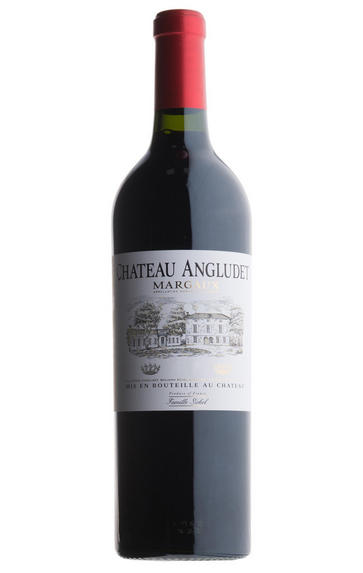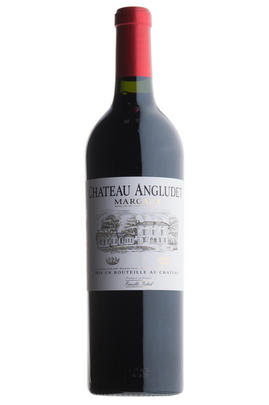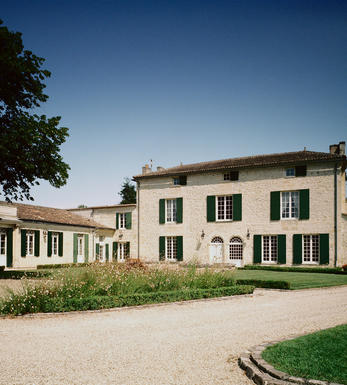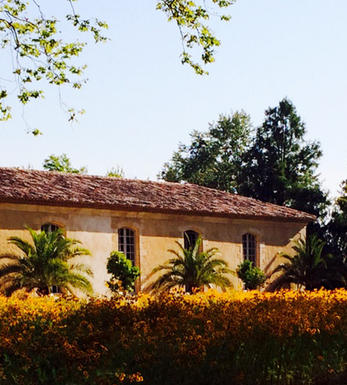
2013 Château Angludet, Margaux, Bordeaux

Critics reviews
Neal Martin - 28/10/2016
About this WINE

Château Angludet
Château d`Angludet is a Cru Bourgeois property that now regularly produces wines of grand cru classé quality. D'Angludet is located in the Margaux appellation and its vineyards are situated at the 3-way intersection of the Cantenac, Arsac and Labarde communes.
The late Peter Sichel purchased d'Angludet in 1961 and it became his home for the next 37 years. The vineyards and cuverie were in a deplorable condition when Sichel took over and it is due to his sheer will and determination that d`Angludet enjoys its high reputation today.
D'Angludet's 32 hectares of vineyards are planted with Cabernet Sauvignon (58%), Merlot (35%), Cabernet Franc (5%) and Petit Verdot (2%). The grapes are fermented in temperature-controlled, stainless steel tanks and the wine is then aged in oak barriques (25-33% new) for 12 months. The wine is bottled unfiltered.

Margaux
If Pauillac can be seen as the bastion of ‘traditional’ Red Bordeaux, then Margaux represents its other facet in producing wines that are among Bordeaux’s most sensual and alluring. It is the largest commune in the Médoc, encompassing the communes of Cantenac, Soussans, Arsac and Labaude, in addition to Margaux itself. Located in the centre of the Haut-Médoc, Margaux is the closest of the important communes to the city of Bordeaux.
The soils in Margaux are the lightest and most gravelly of the Médoc, with some also containing a high percentage of sand. Vineyards located in Cantenac and Margaux make up the core of the appelation with the best vineyard sites being located on well-drained slopes, whose lighter soils give Margaux its deft touch and silky perfumes. Further away from the water, there is a greater clay content and the wines are less dramatically perfumed.
Margaux is the most diffuse of all the Médoc appelations with a reputation for scaling the heights with irreproachable wines such as Ch. Margaux and Ch. Palmer, but also plumbing the depths, with too many other châteaux not fulfilling their potential. There has been an upward shift in recent years, but the appellation cannot yet boast the reliability of St Julien. However, the finest Margaux are exquisitely perfumed and models of refinement and subtlety which have few parallels in Bordeaux.
Recommended Châteaux: Ch. Margaux, Ch. Palmer, Ch. Brane-Cantenac, Ch. Rauzan-Ségla , Ch. Dufort-Vivens, Ch. Ferrière, Ch. du Tertre, Ch. Giscours, Ch. d'Angludet.

Cabernet Sauvignon Blend
Cabernet Sauvignon lends itself particularly well in blends with Merlot. This is actually the archetypal Bordeaux blend, though in different proportions in the sub-regions and sometimes topped up with Cabernet Franc, Malbec, and Petit Verdot.
In the Médoc and Graves the percentage of Cabernet Sauvignon in the blend can range from 95% (Mouton-Rothschild) to as low as 40%. It is particularly suited to the dry, warm, free- draining, gravel-rich soils and is responsible for the redolent cassis characteristics as well as the depth of colour, tannic structure and pronounced acidity of Médoc wines. However 100% Cabernet Sauvignon wines can be slightly hollow-tasting in the middle palate and Merlot with its generous, fleshy fruit flavours acts as a perfect foil by filling in this cavity.
In St-Emilion and Pomerol, the blends are Merlot dominated as Cabernet Sauvignon can struggle to ripen there - when it is included, it adds structure and body to the wine. Sassicaia is the most famous Bordeaux blend in Italy and has spawned many imitations, whereby the blend is now firmly established in the New World and particularly in California and Australia.


Buying options
Add to wishlist
Description
More elegant than many vintages, it delivers in so many other ways. Aromas of sweet bright fruit jump out of the glass, silky velvety red berry notes with good, supple richness. The structure behind this wine provides perfect balance and harmony with a beautiful uplifting and generously long finish. We are not sure how many will follow Angludet’s example but despite the room for manoeuvre being much tighter at this level, they are aware of the market needs so have released almost 20% below the release price of 2011.
Jake Dean, Fine Wine Sales Director
A sweet and fruity nose shows hints of spice and there is a really attractive mouthfeel. Ben Sichel was worried about ripening, particularly in regard to his Cabernet Sauvignon, but we think he has succeeded with good depth and weight of fruit shining through on the palate. 25% of the estates yield was used for this 2013 and there were just 65,000 bottles produced in this vintage, rather than 90,000 in 2012.
wine at a glance
Delivery and quality guarantee